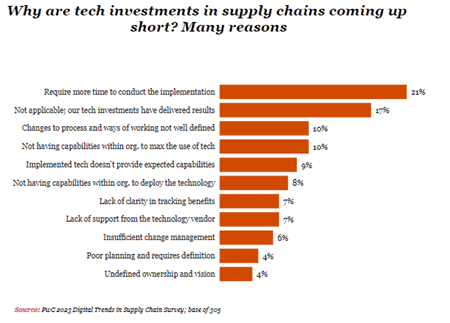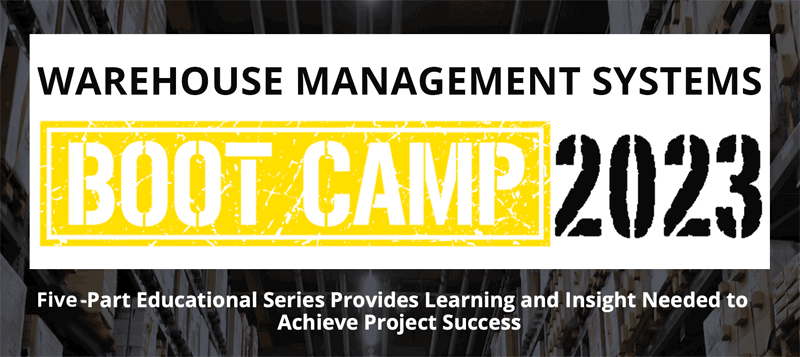Are Investments in Supply Chain Technologies not Delivering to Expectations?
How often do investments in supply chain technology really deliver the expected results?
That seems to me to be a rather important question, but one for which we have little or no answers. I have some educated guesses, but no lack any facts to point you to.
| GILMORE SAYS: |
WHAT DO YOU SAY?'
Perhaps those answering about needing more time were just indicating that it almost always takes longer to get to steady state and positive returns than is laid out in the original plan.
Send us your
Feedback here
|
Of course, it is also almost an impossible question to answer, for a variety of reasons. Let's start with the breadth of what we might consider supply chain technology, everything from mobile robots in distribution centers to demand planning software to deliver drones to digital twins and dozens more.
It seems hard to me to think about the percentage of deployment successes across such a panoply of technologies.
Also challenging: how should "delivering the expected results" really be measured? Is it based purely on whether the ROI calculation used to get the investment approved was reached? Or does it include the more qualitative dimensions, maybe general perceptions of the success or not of a new technology. There can be project drivers that are tough to measure, such as increasing supply chain agility.
So these and other challenges are probably why there is little data on this issue - the success factor. Still, the question is an intriguing one for me and I suspect many of you. I would like to know.
Which is by way of introduction to a recent study by the consultants at PwC, thematically around supply chain digitization, but which included asking 300-plus executives how they saw returns from supply chain technology investments at their companies.
The results are interesting. Just 17% said such investments have delivered the expected results - a very disappointing number. The other 83% cited various factors they believe are most important in why supply chain technology didn't deliver for them as planned, as shown below in a chart from the report.

See Full Size Image
But that 17% number isn't quite right. Another 21% said their investments need some additional time for the implementation to play out.
Which begs a couple of obvious questions. Starting with this: were respondents answering based on just the most recent supply chain technology initiative? The answer about needing more time would seem to imply that to be the case.
Except, even smaller companies may have multiple technology projects going on, maybe warehouse robots and a Transportation Management System (TMS). A large firm may have many initiatives in parallel.
So I am not sure. Perhaps those answering about needing more time were just indicating that it almost always takes longer to get to steady state and positive returns than is laid out in the original plan.
I don't know what the real number is, but I will agree that too high a percentage of supply chain technology projects disappoint.
And just why is that, really?
Critically to me, two of the cited factors are two sides of the same coin: a failure of change management. 10% of respondents cited "Changes to process and ways of working not well defined," while 6% specifically cited the change management factor.
The combined percentage of 16% around change management is probably too low. The never-ending question: we all know the criticality of change management, yet company after company fails to invest sufficiently to deliver project success. Why?
A variety other factors are cited in the chart, such as the 7% who said their companies lacked a framework for tracking the benefits from the investment, and the 9% who said the technology lacks the capabilities really needed to achieve the expected results.
I have a lot more to say on all this, but am going to end it this week right here. Back soon with many more thoughts on supply chain technology ROI. Would welcome your insights as well.
What is your reaction to these thoughts on supply chain tech ROI? Let us know your thought at the Feedback section below.
|











